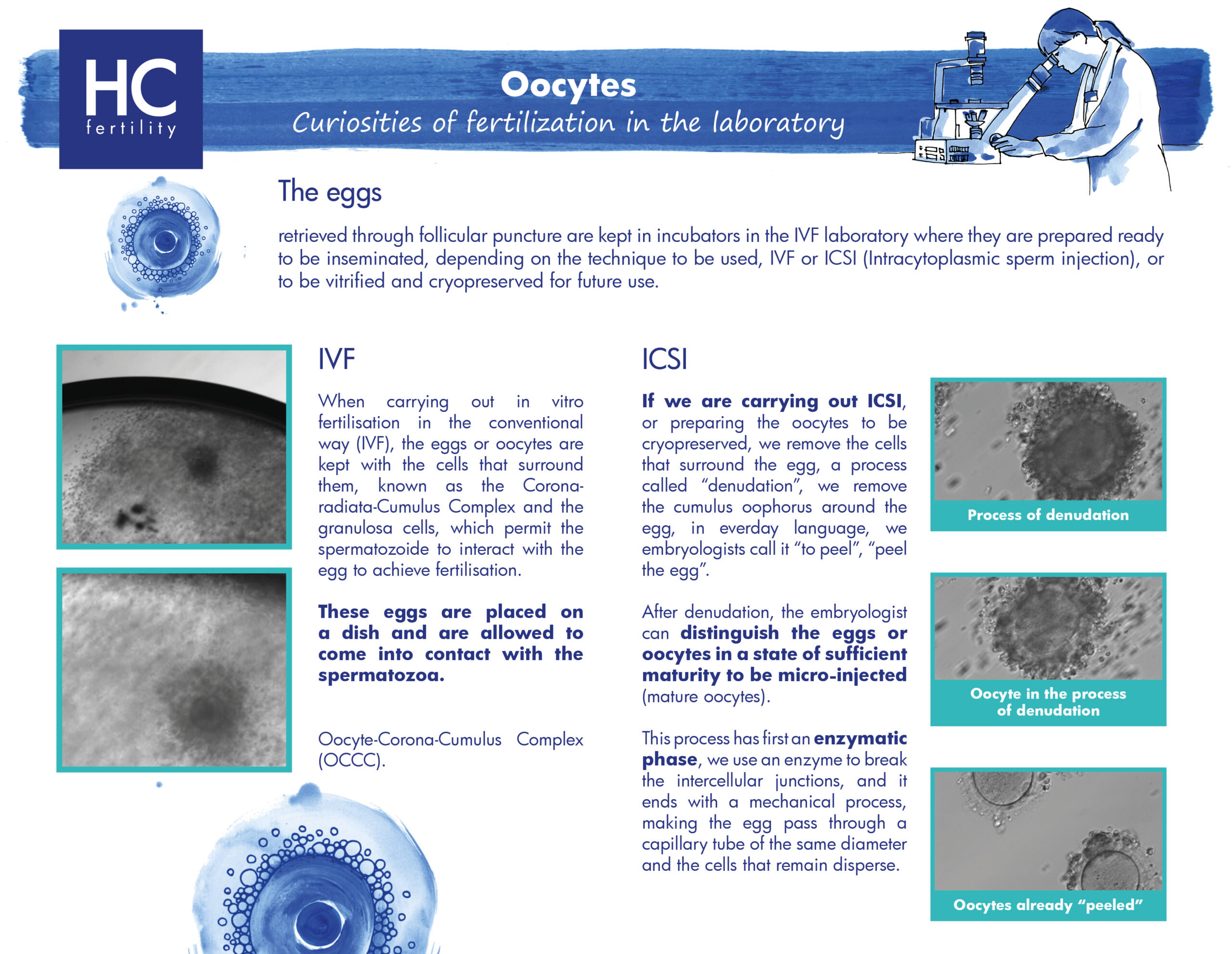15 November, 2019
Eggs: Curiosities of fertilization in the Laboratory

The eggs retrieved through follicular puncture are kept in incubators in the IVF laboratory where they are prepared ready to be inseminated, depending on the technique to be used, IVF or ICSI (Intracytoplasmic sperm injection), or to be vitrified and cryopreserved for future use.

When carrying out in vitro fertilisation in the conventional way (IVF), the eggs or oocytes are kept with the cells that surround them, known as the Corona-radiata-CumulusComplex and the granulosa cells, which permit the spermatozoide to interact with the egg to achieve fertilisation. These eggs are placed on a dish and are allowed to come into contact with the spermatozoa.
If we are carrying out ICSI, or preparing the oocytes to be cryopreserved, we remove the cells that surround the egg, a process called “denudation”, we remove the cumulus oophorus around the egg, in everday language, we embryologists call it “to peel”,“peel the egg”.
After denudation, the embryologist can distinguish the eggs or oocytes in a state of sufficient maturity to be micro-injected (mature oocytes).
This process has first an enzymatic phase, we use an enzyme to break the intercellular junctions, and it ends with a mechanical process, making the egg pass through a capillary tube of the same diameter and the cells that remain disperse.

Back to blog
In other news

9 August, 2015
Prices and Options for Egg Donation cycles
Egg donation is intended for women whose ovaries have lost the ability to produce healthy eggs, nece...
[Continue reading ]23 September, 2021



